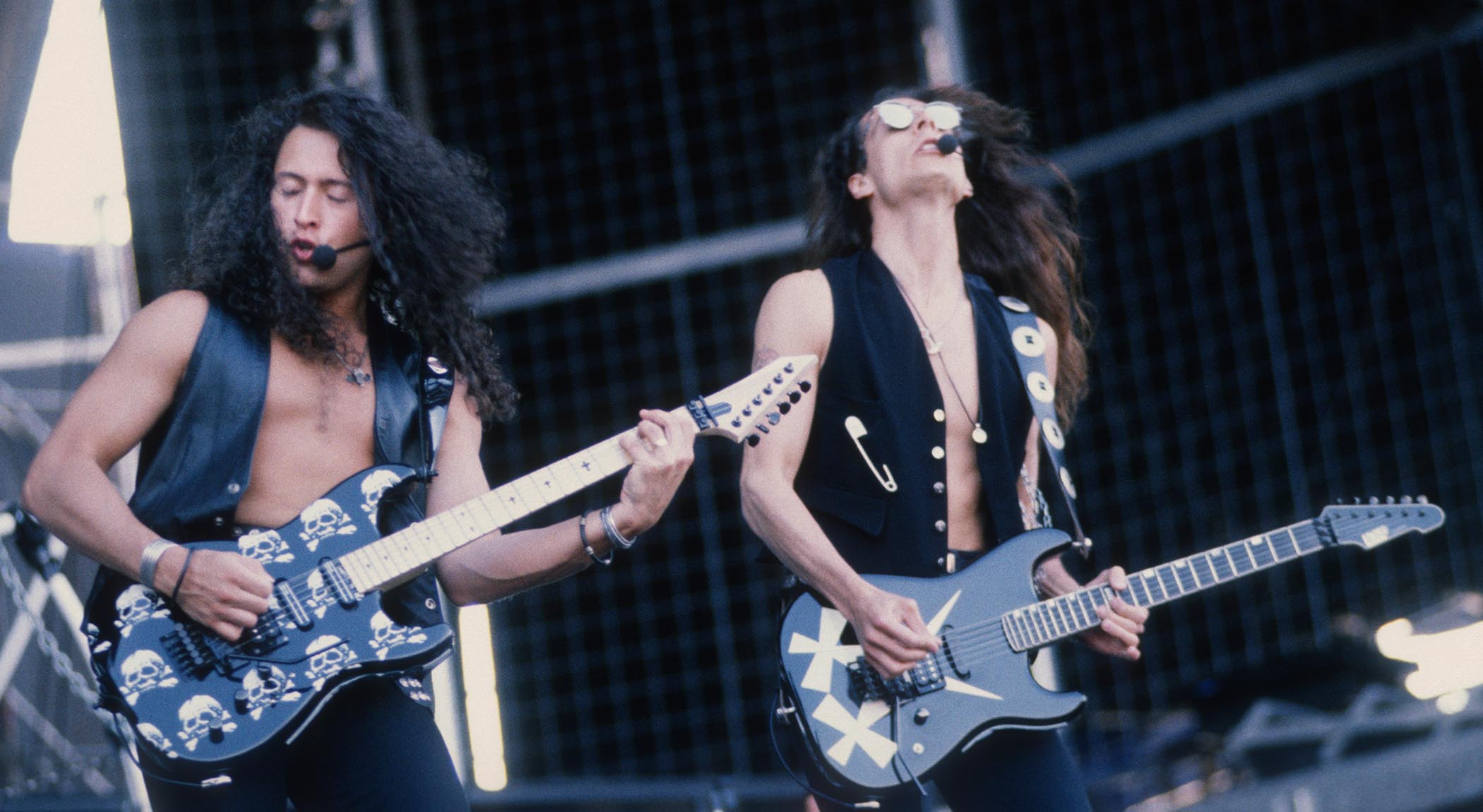
One of the landmark features that sets Queensrÿche’s music apart from other rock and metal bands is the cleverly orchestrated rhythm guitars. Their classic sound is largely due to the interplay between Michael Wilton and Chris DeGarmo’s parts.
Often one guitar will focus on low, driven, sustaining chords as the other creates high melodic motifs. Or they’ll explore harmonic movement against the open strings, while integrating crystal clean tones to elevate the tension and drama.
Despite DeGarmo’s departure in 1997, subsequent guitar players who joined Wilton managed to retain this signature sound by keeping sophisticated rhythm guitar arrangements the staple feature.
Get the tone
Amp Settings: Gain 6, Bass 6, Middle 5, Treble 6, Reverb 5
For a crunchy, driven tone, use your bridge pickup and select the distortion channel on your amp. Set a moderate amount gain so you get weight while retaining pitch clarity.
Make sure you keep some mids in your sound, as this with thicken the doublestop sequences and higher phrases. Finally, add some reverb to bring size and atmosphere to the riffs.
Example 1
The opening section features driving eighth notes on the open fifth string, while moving double-stops establish a melody. Take care with the position changes as it’s easy to mis-fret notes and lose the continuity.
The second section alternates between A5 and A5add#11 chords to establish a Lydian tonality. Make sure the open strings ring for their full duration to maximise the drama.
Example 2
The first phrase uses the third and fourth strings to create a double-stop melody in A Lydian, while the open fifth string acts as a harmonic pedal to thicken the sound.
The second phrase outlines a D powerchord over an ascending bass note. Look out for the 7/8 time signature change and palm-mute the opening three bars of this section. This contrasts the timbre against the previous section while accentuating the new phrasing.







